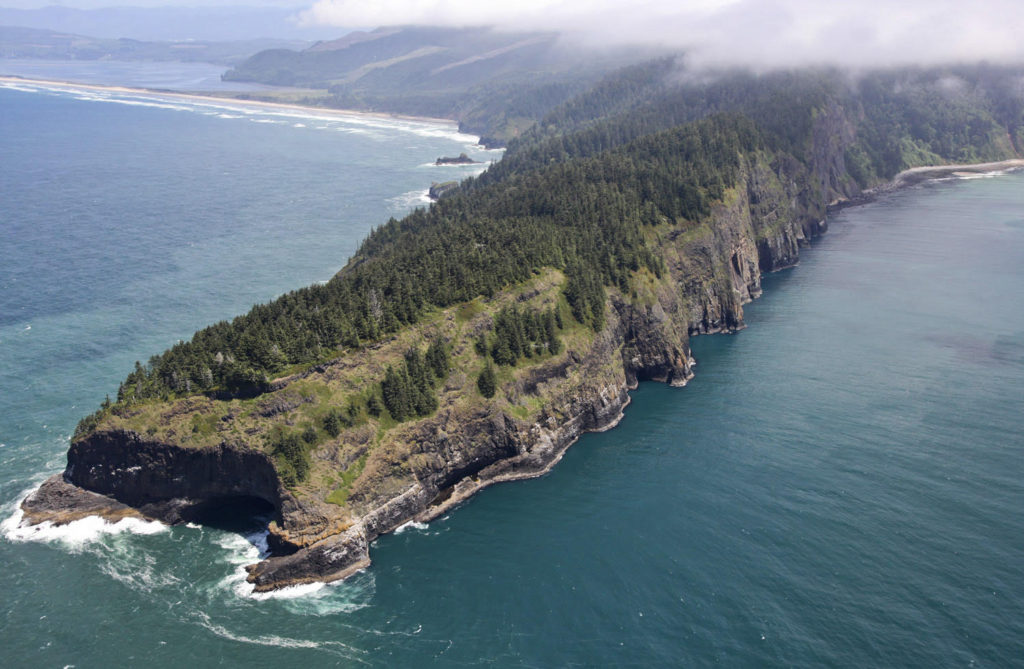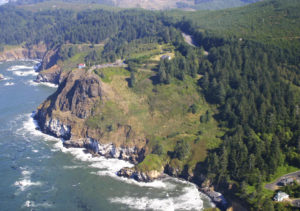
By DANA TIMS/YachatsNews
Oregon’s beaches are enjoyed by countless tourists and locals every year, drawn by soft sand and seemingly endless vistas. Far less accessible, however, are the rocky crags and outcroppings that make up more than 40 percent of the state’s 363 miles of Pacific Ocean shoreline.
Now, propelled by years of volunteer effort and planning, the state is considering designating six new Marine Conservation Areas, all of which are characterized by their rocky habitat.
“This is really a good news story for the Oregon coast,” said Andy Lanier, marine affairs coordinator for the Oregon Department of Land Conservation and Development. “It’s a chance to recognize a really valuable resource.”
Two of the proposed areas – Cape Foulweather, located south of Depoe Bay, and Cape Lookout, north of Pacific City – were proposed by Audubon Society of Lincoln City. They could be approved by the Land Conservation and Development Commission as early as April.
The four other proposed conservation sites are at Chapman Point and Ecola Point north of Cannon Beach, Fogarty Creek near Depoe Bay, and Blacklock Point north of Port Orford.
If given the green light, they will be added to an inventory of rocky shorelines listed in the state’s rocky habitat management strategy. They would join, for instance, the Otter Rock marine garden north of Newport, which is already part of the state’s inventory.
The proposals do not include any changes to existing regulations for fishing or harvest of shellfish.
“The entire effort focuses on stewardship versus regulation as an approach to protect and manage natural resources at the sites,” said Kent Doughty, coastal conservation coordinator for Audubon Society of Lincoln City. “It’s a great opportunity for coastal communities and citizens to get involved and help steer the future of these areas.”

The Cape Foulweather site, a 1.9-mile expanse of rocky shoreline, is home to thousands of nesting seabirds, he said. Extensive underwater kelp forests growing on the reefs play a critical role in supporting local fisheries. Feeding whales are a common sight for visitors standing on the cape above.
The Cape Lookout designation, by comparison, encompasses three miles of the shoreline and near-shore waters, Doughty said. In addition to accommodating flocks of seabirds, it includes tide pools, kelp forests, near-shore reefs, a sea cave and spots where marine mammals congregate.
Doughty said he and other Audubon Society members talk frequently with area fishing interests, trying to reassure them that the proposed conservation areas will not impinge on existing fishing rights.
Still, some skepticism remains.
That was evident when the Pacific City Dorymen’s Association, as part of the public comments gathered leading up to the unveiling of the six proposed new areas, expressed concern that future changes to the regulatory parameters could insert changes into the process.
“Their concern wasn’t so much as the configuration of the site as proposed,” said the state’s Lanier. “Their concern is, if an area moves forward now, what’s to keep it from changing in the future?”
Lanier’s response is that, as the state moves to regularly review how the sites are being managed in the future, any proposed changes would have to go through the very exacting process that has led up to this point.
“There would be a significant public process regarding any proposed changes,” he said.
If, as expected, the six proposed sites are cleared for next steps, it would likely take a full year for various state agencies to complete the rule-making procedure needed to put the finishing touches on actual management plans.
Lanier, who has been helping guide the Marine Conservation Area process for the past four years, is among those who expect that to happen.
“Each coastal community we have worked with has seen a real groundswell of support for this,” he said. “And that support has really played a significant role in moving these ideas forward.”
- Dana Tims is an Oregon freelance writer who contributes regularly to YachatsNews.com. He can be reached at DanaTims24@gmail.com




















